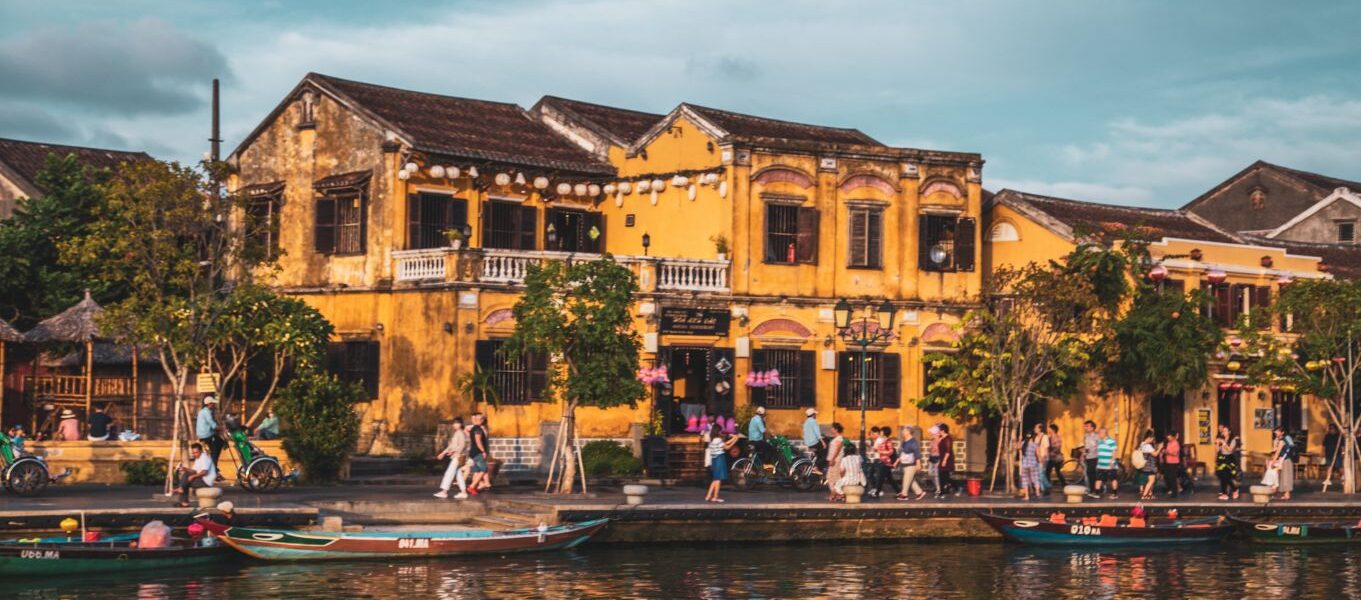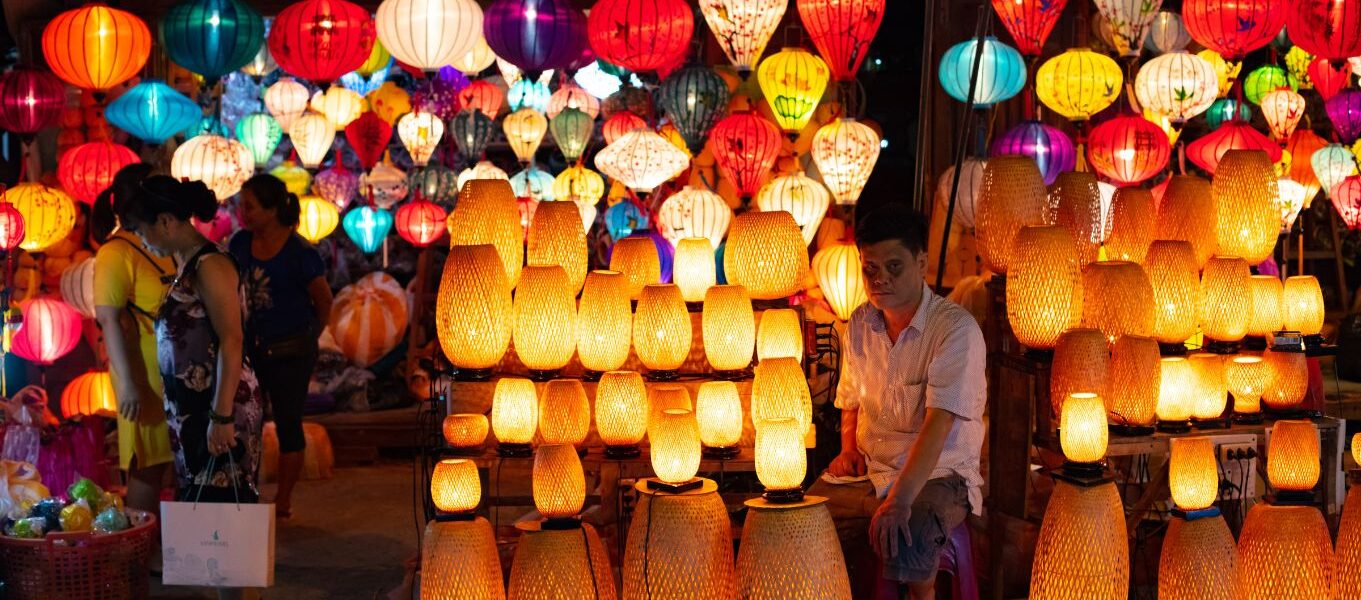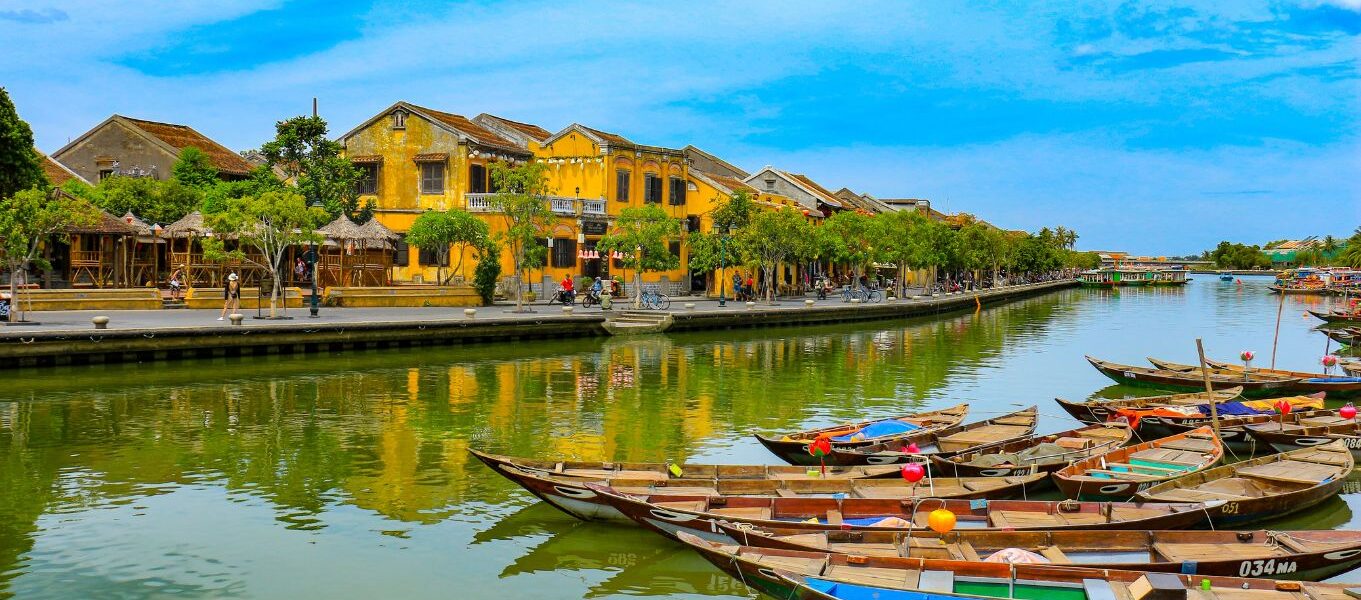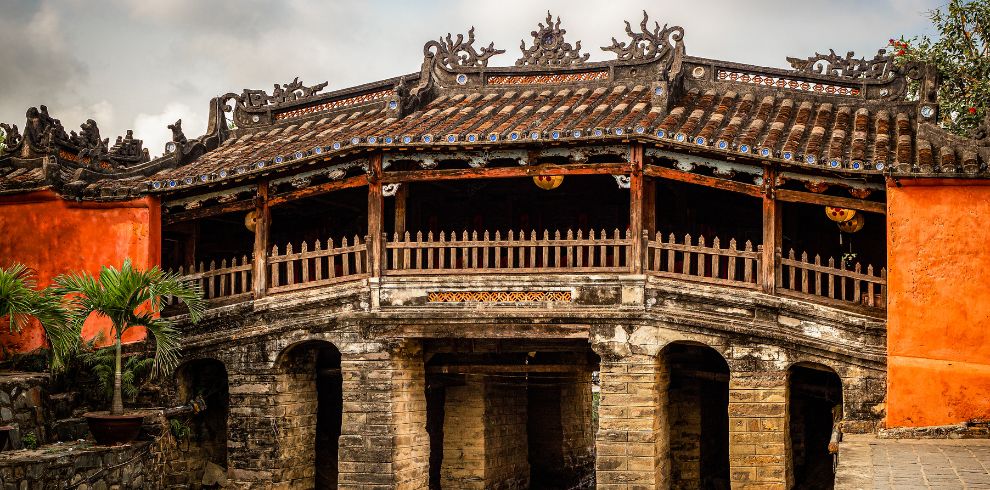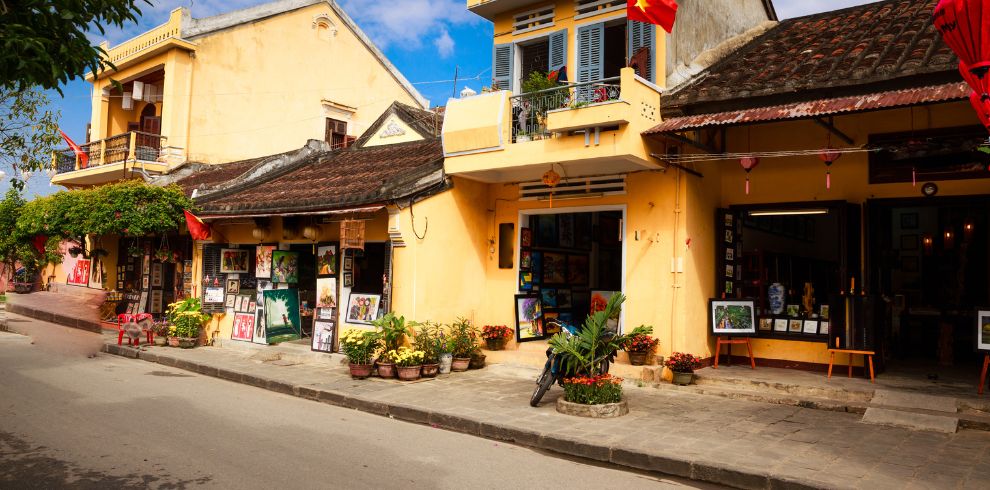Morning:
Begin your day with a pickup from your hotel and head to the heart of Hoi An town. Your first stop is Cam Pho, one of the oldest communal houses in Hoi An, built in the shape of a Chinese character symbolizing the country. This historic site has long been a center for worship, trade, and cultural exchange among locals, Chinese, and Japanese traders.
Stroll leisurely to the Chua Cau, or Japanese Covered Bridge, Hoi An’s iconic symbol. Built in the 17th century, this bridge connected the Japanese and Chinese quarters, and its original design has been meticulously preserved for over 400 years.
Continue your walking tour through the charming streets of Hoi An, immersing yourself in local life. Visit Quan Thang Ancient House, renowned for its authentic oriental architecture and intricate carvings crafted by artisans from the famous Kim Bong carpentry village. This house offers a fascinating glimpse into the daily life of a Hoi An family.
Enhance your tour with a visit to the Phuc Kien (Fujian) Assembly Hall, established in the 17th century as a gathering place for Fujian residents and traders. This hall also serves as a religious site honoring the deity Thien Hau. Admire the colorful fountains in the courtyard, the ornate gates, and the beautifully carved dragons.
Midday:
Take a break for lunch and enjoy some free time to explore the town at your leisure.
Afternoon:
Transfer to Tra Que Village, making a stop at Chuc Thanh Pagoda along the way. Built in 1671, this is the oldest pagoda in Hoi An and holds great historical value from the 17th and 18th centuries.
Continue to Tra Que Village, famous for its aromatic herbs, mint, and basil. The leaves of these herbs are smaller than usual but boast a unique flavor. Explore the village and its vegetable fields, meeting the hardworking farmers who tend to their crops year-round. Observe the traditional techniques of vegetable gardening and visit a local gardener's home (Mr. Chinh). He will share stories about the history and customs of this charming village as well as his family’s heritage.
After a day filled with cultural and historical exploration, transfer back to your hotel, concluding your memorable tour.


